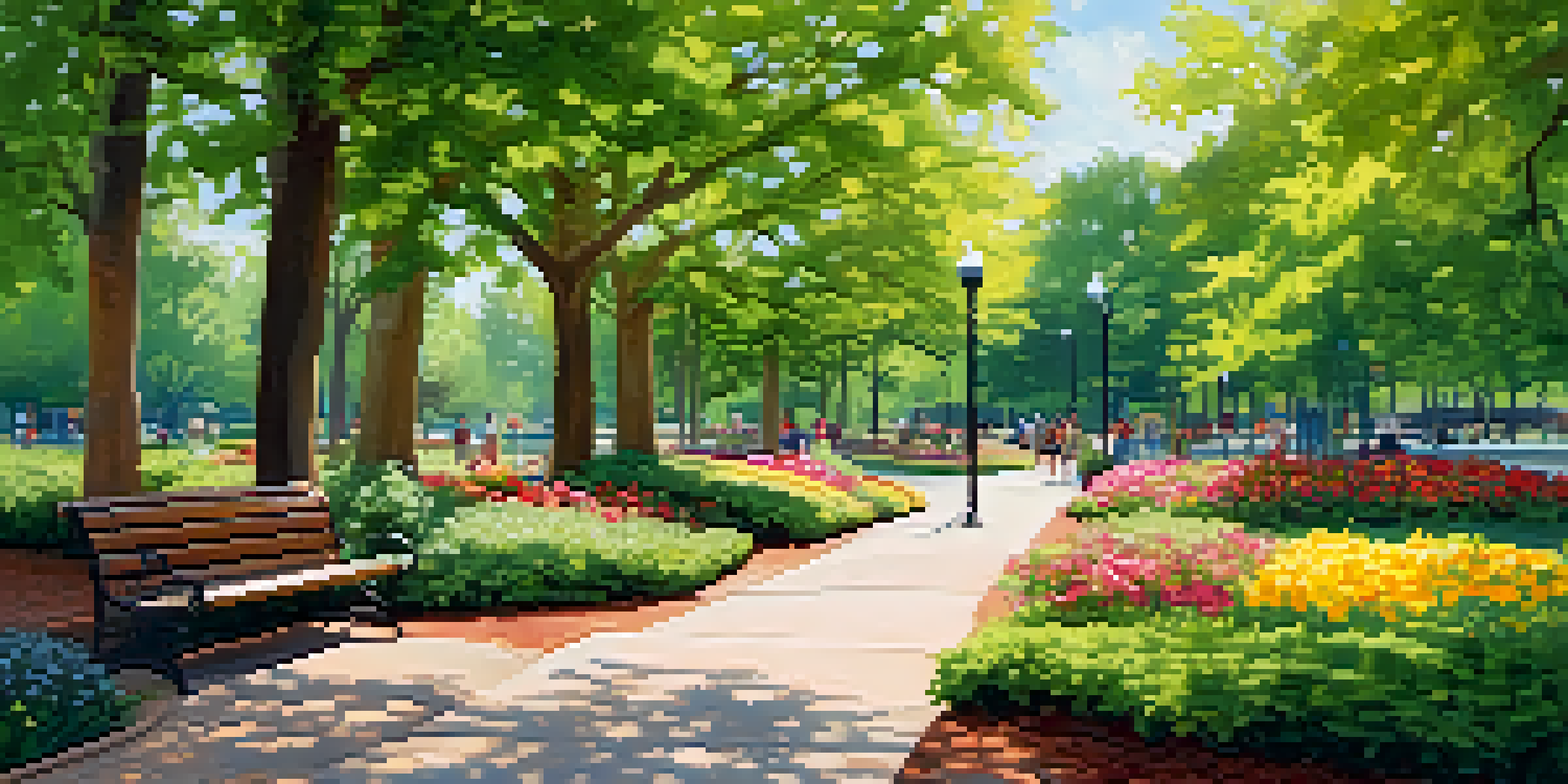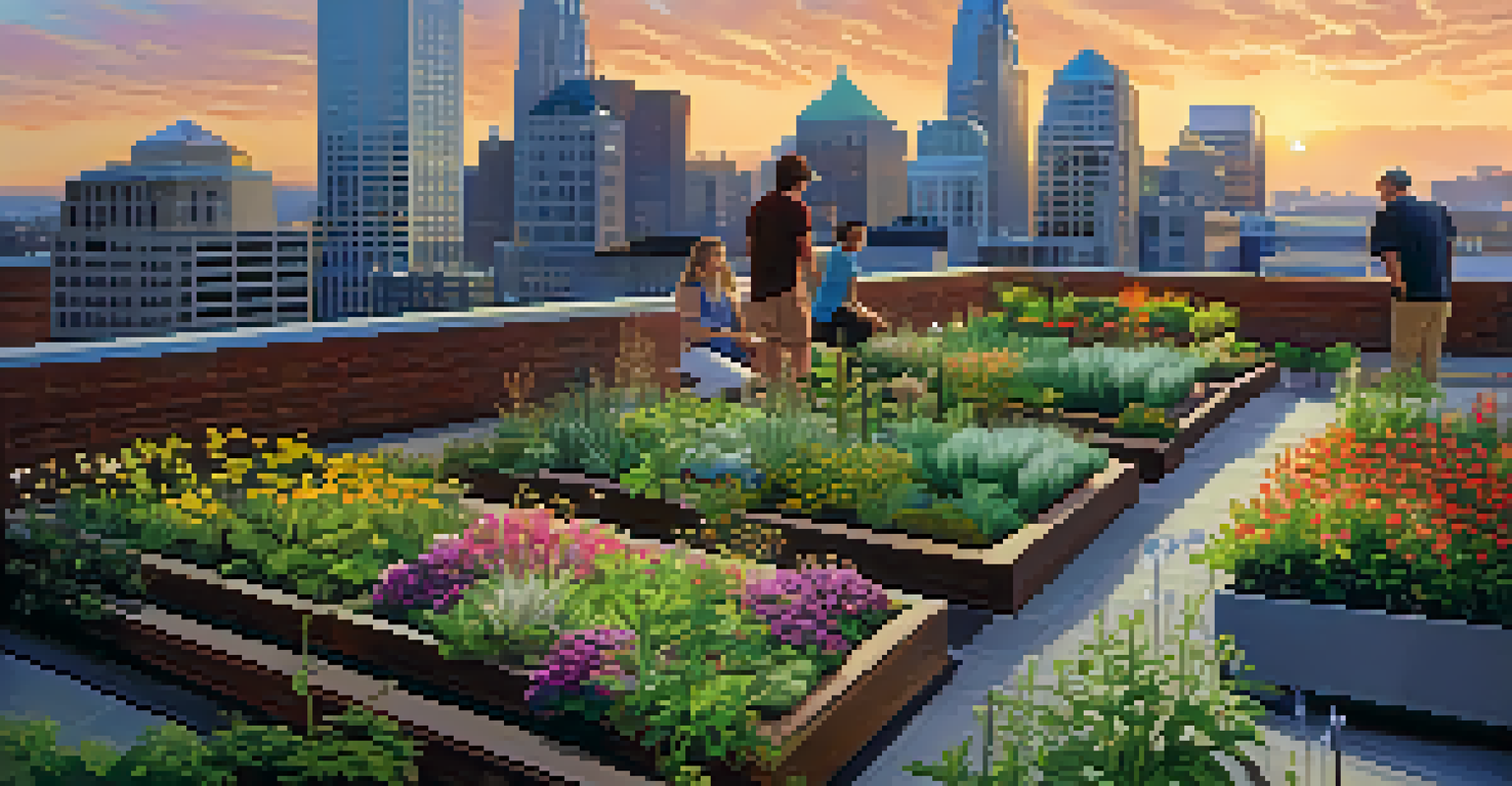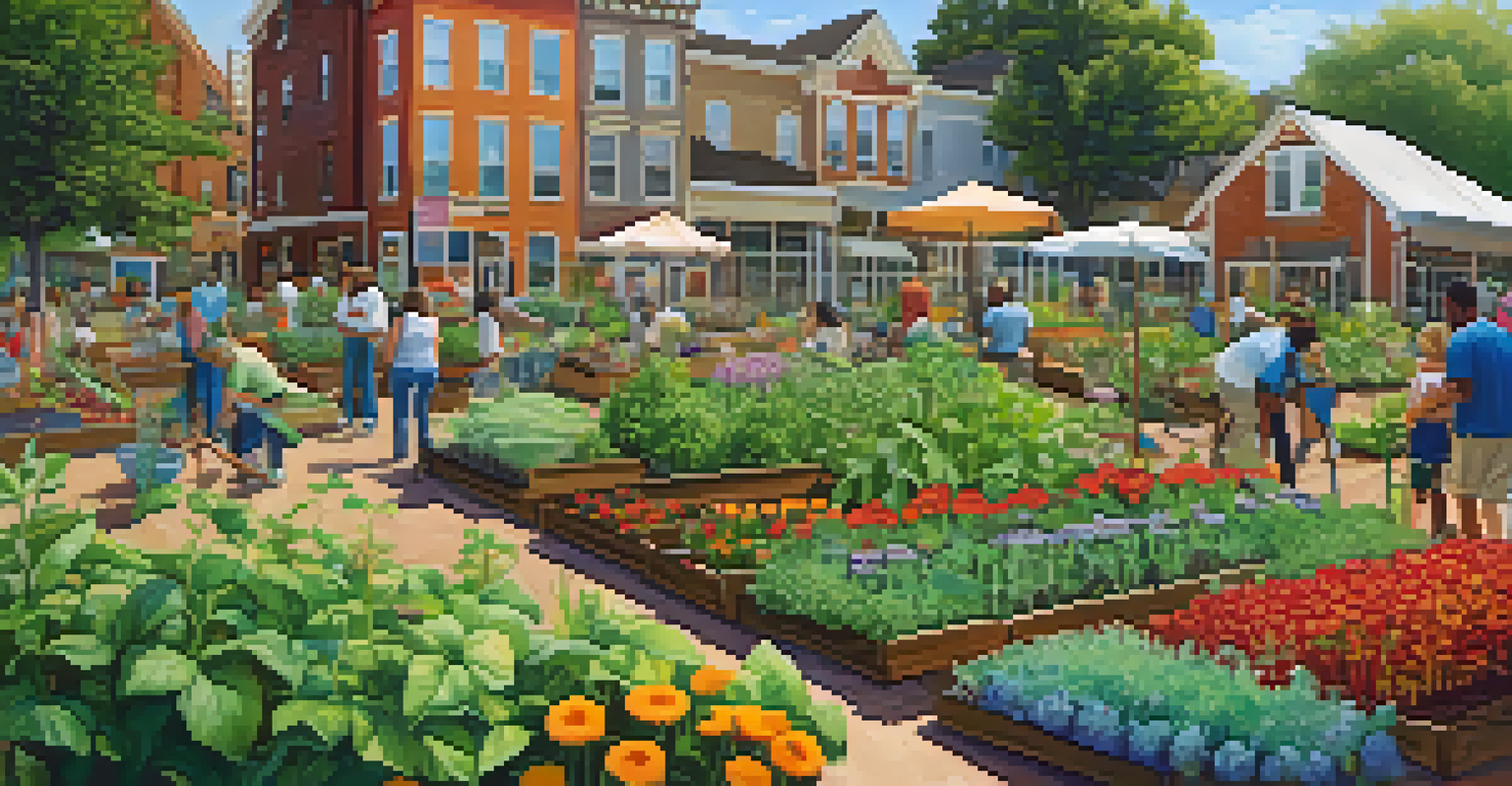The Role of Green Spaces in Mitigating Charlotte's Challenges

Understanding Charlotte's Urban Challenges
Charlotte, like many growing cities, faces a range of urban challenges including pollution, traffic congestion, and heat islands. As the population continues to swell, these issues become more pronounced, affecting the quality of life for its residents. It's crucial to understand these challenges to appreciate the potential solutions that green spaces can offer.
Nature does not hurry, yet everything is accomplished.
The rapid urbanization of Charlotte has led to a decline in natural landscapes, which exacerbates problems such as air and noise pollution. With more cars on the road and fewer trees to absorb carbon emissions, the city's air quality suffers. This decline not only impacts residents' health but also diminishes the overall appeal of the city.
Furthermore, the heat island effect is a significant concern, where urban areas become significantly warmer than their rural surroundings. This phenomenon not only increases energy costs but also poses health risks, particularly for vulnerable populations. Addressing these urban challenges is essential, and green spaces could be a key part of the solution.
The Importance of Green Spaces in Urban Areas
Green spaces are more than just pretty parks; they serve vital functions in urban environments. These areas provide essential ecological benefits, such as improving air quality and supporting biodiversity. When we incorporate greenery into a city, we not only beautify it but also create habitats for various species, enhancing the urban ecosystem.

Additionally, green spaces play a crucial role in mental well-being. Studies have shown that spending time in nature can reduce stress, anxiety, and depression. Parks and gardens offer a tranquil escape from the hustle and bustle of city life, providing residents with a place to unwind and recharge.
Green Spaces Improve Air Quality
Increasing greenery in Charlotte can significantly mitigate air pollution by acting as natural air filters.
Moreover, these spaces can foster community engagement. Whether it's a neighborhood park hosting a weekend farmers' market or a community garden, green spaces encourage social interactions, bringing people together and strengthening communal ties. This social cohesion is invaluable in an increasingly fragmented urban landscape.
How Green Spaces Combat Air Pollution
One of the most immediate benefits of green spaces is their ability to improve air quality. Trees and plants naturally absorb carbon dioxide and release oxygen, acting as natural air filters. In a city like Charlotte, where air pollution is a growing concern, increasing greenery can significantly mitigate these harmful effects.
The best time to plant a tree was twenty years ago. The second best time is now.
Moreover, urban greenery can help trap dust, smoke, and other pollutants, reducing their concentration in the air. This is especially important in areas with heavy traffic, where emissions can negatively impact the health of residents. By integrating more parks and tree-lined streets, Charlotte can create a cleaner, healthier environment for its citizens.
It's also worth noting that green spaces can help educate residents about environmental stewardship. Community programs that involve planting trees or maintaining gardens can raise awareness about air quality issues and inspire action. This kind of grassroots involvement not only beautifies the city but also promotes a culture of sustainability.
Reducing Urban Heat with Greenery
Urban heat islands are a significant challenge in cities, where concrete and asphalt absorb and retain heat. Green spaces provide a cooling effect through shade and evapotranspiration, which can lower surrounding temperatures. This is particularly beneficial during the hot summer months in Charlotte, where heat can become unbearable.
Creating more parks, green roofs, and tree canopies can effectively counteract this phenomenon. The presence of greenery can lead to cooler neighborhoods, reducing the need for air conditioning and lowering energy bills for residents. It's a win-win situation that benefits both the environment and residents' wallets.
Greenery Reduces Urban Heat
The presence of parks and trees can lower temperatures in Charlotte, providing cooling effects and reducing energy costs.
Incorporating green infrastructure, such as rain gardens and permeable pavements, can further enhance cooling effects while managing stormwater runoff. This holistic approach not only keeps the city cooler but also helps prevent flooding, making it an essential aspect of urban planning in Charlotte.
Enhancing Community Health through Nature
Access to green spaces is directly linked to improved physical and mental health. Regular interaction with nature encourages physical activity, whether through walking, jogging, or playing sports. For residents in Charlotte, having nearby parks can promote a more active lifestyle, combating issues like obesity and related health problems.
Moreover, green spaces can play a therapeutic role, especially for individuals dealing with mental health challenges. Nature exposure has been shown to lower stress levels, improve mood, and enhance overall well-being. Parks and gardens can serve as vital resources for community mental health, offering a refuge from daily stresses.
Furthermore, the presence of green spaces fosters social connections, which are essential for mental health. Whether it's a friendly conversation with a neighbor or joining a community event, these interactions can reduce feelings of isolation. As Charlotte continues to grow, prioritizing accessible green spaces will be crucial for the health of its residents.
Boosting Biodiversity in Urban Settings
Green spaces play a pivotal role in promoting biodiversity within urban environments. By integrating a variety of plants and natural habitats, cities can support a diverse range of wildlife, from birds to pollinators. This biodiversity is not only essential for ecological balance but also enhances the beauty and vitality of neighborhoods.
In Charlotte, creating habitats such as native plant gardens can attract beneficial insects and birds, contributing to a healthier ecosystem. These spaces can also serve as educational resources, teaching residents about local flora and fauna. This knowledge fosters a sense of stewardship and encourages sustainable practices within the community.
Boosting Community Health and Well-being
Access to green spaces promotes physical activity and mental health, fostering community connections and reducing isolation.
Moreover, increased biodiversity can improve resilience against climate change. Diverse ecosystems are more adaptable to changing conditions, helping to ensure that both wildlife and human populations can thrive. By prioritizing biodiversity in urban planning, Charlotte can create a more sustainable future.
The Future of Green Spaces in Charlotte
Looking ahead, the integration of green spaces in Charlotte's urban development must be a priority. City planners and community leaders should collaborate to identify and repurpose underutilized areas for parks and gardens. This proactive approach will not only address current challenges but also enhance the city's livability for future generations.
Community involvement is crucial in this process, as residents can provide valuable input on the types of green spaces they want and need. Initiatives like community gardening or tree planting can empower residents to take ownership of their local environment. Engaging the community creates a sense of pride and responsibility towards maintaining these green spaces.

Ultimately, the future of Charlotte depends on a balanced integration of nature within the urban landscape. By prioritizing green spaces, the city can cultivate a healthier, more vibrant community that attracts residents and visitors alike. Embracing this vision will ensure that Charlotte remains a flourishing, sustainable city for years to come.